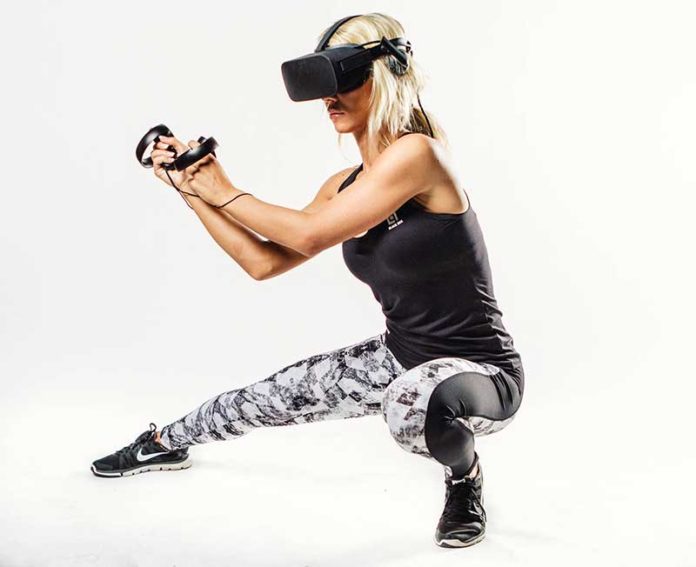The way that we experience exercise can be completely different depending on the activity we choose and how we perceive it. Imagine two different activities that both are strenuous and get your heart rate up:
Jumping rope for 10 minutes without stopping
The first minute is kind of fun as you get up to speed and you start to get the hang of it again. Then the burn starts to creep in, and you realize you still have nine minutes to go. You try to distract yourself and focus on the music in the room, but after what seems like five minutes, you look at the clock and realize only 45 seconds have gone by. The pain in your legs, calves, feet, and lungs start to build up, and you wonder if you can make it the full 10 minutes.
Playing basketball with friends in the last 10 minutes of a tournament championship
Wow, only ten minutes left to go! The score is tied, and the championship is on the line. Everybody is watching. This is your chance to be a hero or a zero! You run, jump and shoot as fast as possible knowing that every little bit of extra effort counts. The clock is already down to 30 seconds as you sprint down the court one last time, post up, ask for the ball, and as the buzzer sounds, you reach up and shoot over the defender. It goes in! Sweat drips off of you as you smile and run to your teammates to celebrate.
Both of these activities got your heart rate up to 80 – 90% of your maximum. Both of them made you sweat profusely. But only one of them felt like torture.
Why? And why is VR positioned to be the best thing for exercise adherence in history? Let’s explore.
Scientists measure exercise intensity based on many factors such as heart rate and number of calories burned. They also measure perceived exertion using the Borg Rating of Perceived Exertion scale. This is a subjective rating from exercisers on a 15 point scale (from 6 – 20):
The difference between actual physical effort and intensity and PERCEIVED exertion is usually correlated, but in some instances, they can be vastly different.
The holy grail for exercisers is to find an activity that gives them an intense, fat burning, muscle building workout that they perceive to be easy, fun, and interesting. Can VR be what we’ve been searching for this whole time? A new study says yes.
University study on perceived exertion in virtual reality
Soojeong Yoo and colleagues at the University of Sydney wanted to find out if playing VR games could give you a good workout and make it seem easy.
They used the HTC Vive room-scale VR system (which is recommended by VR Fitness Insider) and asked participants to play four different VR games for up to ten minutes each. The games chosen were:
What were the results? Three of the games had a lower perceived exertion rating vs. exercise intensity, and one was actually rated more difficult.
The full details are available on their website.
Fruit Ninja is a fun, simple game that the participants enjoyed. The Borg score of 10 shows low perceived exertion even though they got their heart rate up to 66% of maximum.
Hot Squat, on the other hand, was perceived as hard. The game is very simple and literally, puts you into a virtual gym. The feeling of boredom and knowing it is exercise actually caused a few participants to quit early. It was great exercise, but not something that most people would enjoy.
Holopoint was the most intense exercise and only had a Borg rating of 12! It’s a fun bow-and-arrow game that utilizes the full room-scale capabilities. Keeping people interested put them into a flow state, causing them to forget about the exercise intensity.
Portal Stories is a light exercise game but still got them up to 55% of their max heart rate (which is a lot better than sitting while playing computer games). Even though they were exerting themselves, they gave it the lowest possible Borg score rating of 6. This puzzle game definitely keeps your mind distracted from what you are doing.
THE RESULTS ARE IN: VR IS A FITNESS WINNER
The games that were tested are very basic, first-generation games using first-generation consumer VR hardware. More interesting, immersive game experiences are now available, and many more are coming in the next few months. Lighter, wireless VR headsets are in development.
 Even these early VR games show that you can get a real workout with virtual reality and enjoy it more than other activities of similar intensity. As you’d guess, games that put you into a flow state (the types of games you play and hours pass by without you realizing it) have the ability to make exercise feel effortless.
Even these early VR games show that you can get a real workout with virtual reality and enjoy it more than other activities of similar intensity. As you’d guess, games that put you into a flow state (the types of games you play and hours pass by without you realizing it) have the ability to make exercise feel effortless.
The games may be virtual, but the health and fitness results are real. The revolution is coming.
Interested in our view on how VR fitness and sports will evolve in the next ten years? Check it out.










